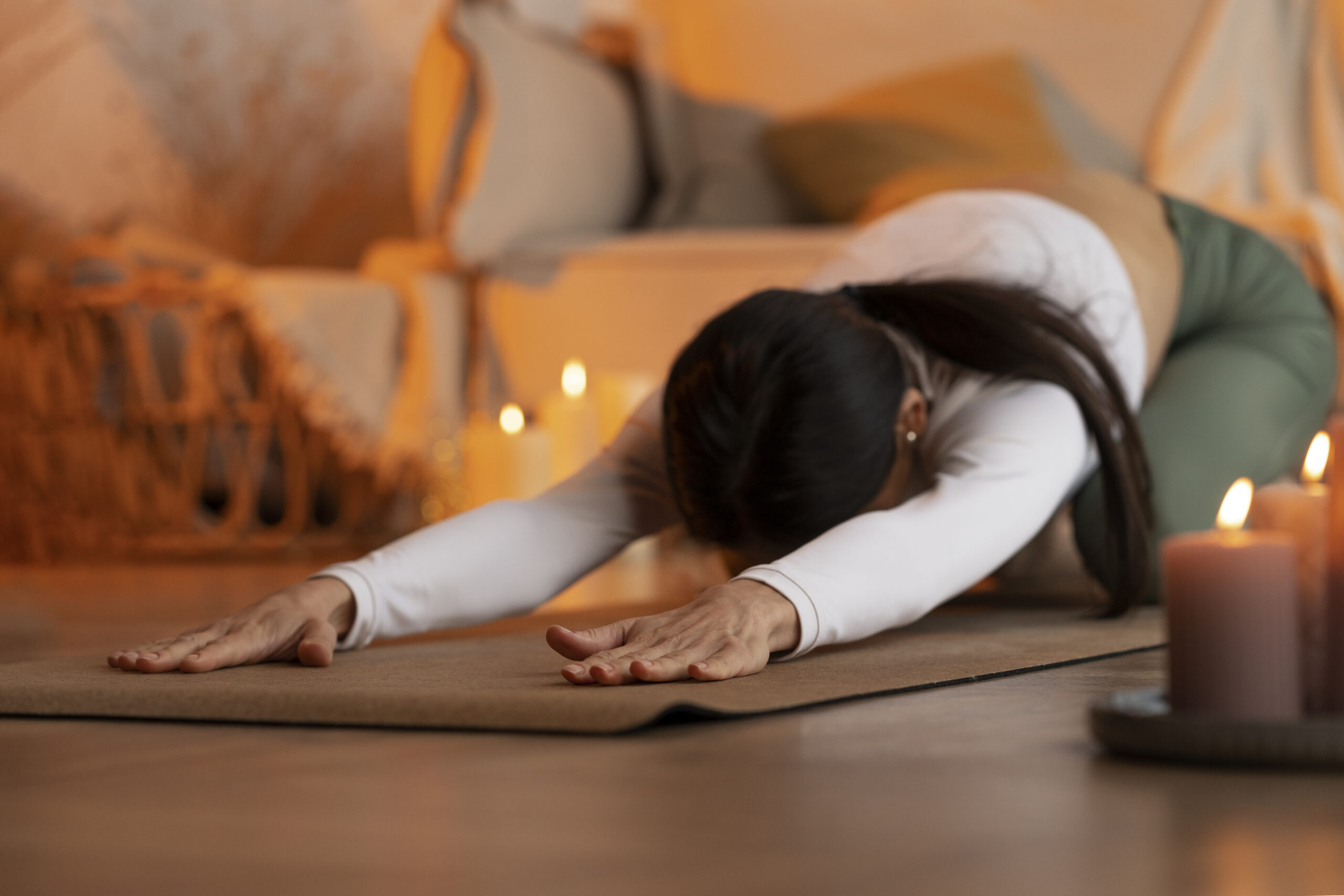Have you ever tried to meditate, only to find your mind racing with to-do lists, worries, and random thoughts? You’re not alone. Many people feel that meditation is an uphill battle against a busy brain. But what if I told you there’s a simple, built-in tool you can use to find calm and focus? It’s your breath. Learning a few breathing techniques for meditation can transform your practice from frustrating to fulfilling.
Your breath is like an anchor. Whenever your mind starts to drift, you can always bring your attention back to the simple, steady rhythm of your inhales and exhales. This post will guide you through some of the most effective and easy-to-learn breathing exercises. Consequently, you’ll discover how to use your breath to deepen your meditation, reduce stress, and cultivate a sense of inner peace. We will explore simple methods that anyone can try, whether you are a complete beginner or looking to refresh your practice.
Why Your Breath is a Superpower in Meditation
Before we get into specific methods, let’s first discover the reason why breathing is so effective. The breath and the nervous system are inextricably linked. If you’re stressed or nervous, your breathing is typically sluggish and shallow. If you choose to slow down and increase the volume of your breathing, you are sending an alert to your brain that it’s time for relaxation. This simple gesture can decrease the heart rate, lower blood pressure, and relax your mind.

When you meditate, your breathing is the primary focus. Instead of attempting to make your mind empty, which is virtually impossible, do what you can to ease it paying attention to your breathing. The act of paying focus is at the heart of mindfulness. In turn, you teach your brain to be focused on the present rather than sifting through thoughts of the future or past.
Foundational Breathing Techniques for Meditation
Starting a meditation practice doesn’t require complex rituals or years of training. In fact, you can begin right now with these simple yet profound breathing exercises. These techniques are perfect for beginners and offer a solid foundation for any meditation journey.
1. Mindful Breathing (Anapanasati)
This is perhaps the most fundamental breathing technique and a great starting point. The goal isn’t to change your breath but simply to observe it as it is. This practice builds awareness and helps you connect with your body.

How to Do It:
- Find a comfortable seated position. You can sit on a cushion on the floor or in a chair with your feet flat on the ground. Keep your back straight but not stiff.
- Gently close your eyes or lower your gaze to a soft focus on the floor in front of you.
- Begin by taking a few deep breaths to settle in. Then, let your breath return to its natural rhythm. Don’t try to control it.
- Bring your full attention to the sensation of your breath. You might notice the feeling of air entering and leaving your nostrils. Alternatively, you could focus on the gentle rise and fall of your chest or abdomen. Choose one spot and stick with it.
- When your mind wanders (and it will), gently and without judgment, guide your attention back to your breath. Each time you bring your focus back, you are strengthening your mindfulness muscle.
Start by practicing for just five minutes a day. You can gradually increase the duration as you become more comfortable. This technique teaches you to be a compassionate observer of your own mind.
2. The 4-7-8 Breathing Technique
Created by Dr. Andrew Weil, the 4-7-8 technique is sometimes referred to as “relaxing breath.” It’s extremely effective in relaxing anxiety and may even aid in falling asleep. This technique acts as a natural calmer for the nervous system since it requires you to slow your breathing, and also increases the amount of oxygen in your bloodstream.

How to Do It:
- Sit or lie down in a comfortable position. Place the tip of your tongue against the ridge of tissue just behind your upper front teeth and keep it there throughout the entire exercise.
- Exhale completely through your mouth, making a gentle whooshing sound.
- Close your mouth and inhale quietly through your nose to a mental count of four.
- Hold your breath for a count of seven.
- Exhale completely through your mouth, making that whoosh sound again, for a count of eight.
- This completes one breath cycle. Now, inhale again and repeat the cycle three more times for a total of four breaths.
In the beginning, it’s best not to exceed the equivalent of four breathing cycles in one row. You can try this method several times per day. The power of this technique is in the rhythm and the extended exhale that aids in activating your body’s parasympathetic nervous system, which is the “rest and digest” mode.
3. Box Breathing (Sama Vritti)
Box breathing is an easy and effective technique that is used by everyone from yoga teachers up to Navy SEALs to remain at ease and focused when under stress. It’s referred to as “box breathing” because it has four equal sides: inhale, hold, exhale, and hold in the same time. This rhythm is balanced and helps regulate the autonomic nervous system and provides a sense of stability.

How to Do It:
- Find a comfortable seated position with your back straight.
- Exhale completely to empty your lungs.
- Inhale slowly through your nose for a count of four.
- Hold your breath for a count of four. Be sure not to clamp down; just gently pause.
- Exhale slowly and completely through your mouth or nose for a count of four.
- Hold your breath at the end of the exhale for a count of four.
- This completes one round. Continue for at least five minutes or until you feel centered and calm.
The symmetry of box breathing is very grounding. Visualizing a box as you count can also help keep your mind focused and prevent it from wandering.
Making Breathing Techniques a Part of Your Life
The most effective benefits of these breathing methods for meditation are the regular practice of them. You don’t need to set aside an hour every day. Beginning with five minutes could have a major impact. Find a time that is convenient for you, whether early to get up, on your lunch break, or just before you go to bed.
Be gentle and patient with yourself. There will be occasions where your mind is active, and that’s normal. It’s not about achieving silence, but to keep returning to your anchor, your breath repeatedly.
When you incorporate these easy breath exercises in your daily routine, it is not simply learning how to meditate. You’re providing yourself with a powerful tool to reduce stress, increase focus, and move through your life with a sense of peace and clarity. So, take a deep breath. You’ve already begun.



